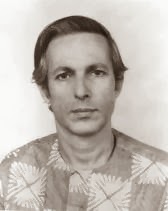Pieces of Samir Amin, 2011, Imperialism,
The Permanent Phase of Capitalism
V I Lenin
Author of
“Imperialism, the Highest Stage of Capitalism”
Is Generalized
Monopoly Capitalism the Last Phase of Capitalism?
“Permanent”,
but without a bourgeoisie?
Lenin described the imperialism of the monopolies as the
“highest stage of capitalism.” I have described imperialism as a “permanent
phase of capitalism” in the sense that globalized historical capitalism has
built up, and never ceases from reproducing and deepening, the center/periphery
polarization. The first wave of constituting monopolies at the end of the
nineteenth century certainly involved a qualitative transformation in the
fundamental structures of the capitalist mode of production. Lenin deduced from
this that the socialist revolution was on the agenda, and Rosa Luxemburg
believed that the alternatives were now “socialism or barbarism.” Lenin was
certainly too optimistic, having underestimated the devastating effects of the
imperialist rent—and the transfer associated with it—on the revolution from the
West (the centers) to the East (the peripheries).
The second wave of the centralization of capital, which took
place in the last third of the twentieth century, constituted a second
qualitative transformation of the system, which I have described as
“generalized monopolies.” From now on, they not only commanded the heights of
the modern economy; they also succeeded in imposing their direct control over
the whole production system. The small and medium enterprises (and even the
large ones outside the monopolies), such as the farmers, were literally
dispossessed, reduced to the status of sub-contractors, with their upstream and
downstream operations, and subjected to rigid control by the monopolies.
Osagyefo Dr
Kwame Nkrumah
Author of “Neo-Colonialism,
the Last Stage of Imperialism”
At this highest phase of the centralization of capital, its
ties with a living organic body—the bourgeoisie—have broken. This is an
immensely important change: the historical bourgeoisie, constituted of families
rooted locally, has given way to an anonymous oligarchy/plutocracy that
controls the monopolies, in spite of the dispersion of the title deeds of their
capital. The range of financial operations invented over the last decades bears
witness to this supreme form of alienation: the speculator can now sell what he
does not even possess, so that the principle of property is reduced to a status
that is little less than derisory.
The function of socially productive labor has disappeared.
The high degree of alienation had already attributed a productive virtue to
money (“money makes little ones”). Now alienation has reached new heights: it
is time (“time is money”) that by its virtue alone “produces profit.” The new
bourgeois class that responds to the requirements of the reproduction of the
system has been reduced to the status of “waged servants” (precarious, to
boot), even when they are, as members of the upper sectors of the middle
classes, privileged people who are very well paid for their “work.”
This being so, should one not conclude that capitalism has
had its day? There is no other possible answer to the challenge: the monopolies
must be nationalized. This is a first, unavoidable step toward a possible
socialization of their management by workers and citizens. Only this will make
it possible to progress along the long road to socialism. At the same time, it
will be the only way of developing a new macro economy that restores a genuine
space for the operations of small and medium enterprises. If that is not done,
the logic of domination by abstract capital can produce nothing but the decline
of democracy and civilization, to a “generalized apartheid” at the world level.









